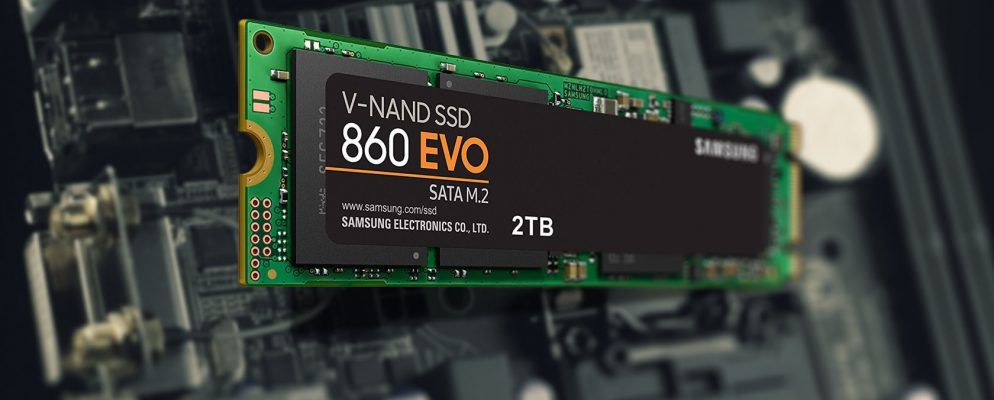Whether you’re building a PC or just want a fast disk drive for running your operating system, it’s wise to consider an SSD drive. But rather than choose a typical 2.5-inch SATA device, why not consider something a bit more up to date?
SSD has evolved, with devices released that plug directly into the motherboard. You might have heard of mSATA, but what is an M.2 SSD? And how do you install one in your PC?
M.2 SSD or mSATA SSD?
When building your own PC or upgrading an existing model, opting for the fastest possible storage is a smart move. After all, if you can install your operating system on super-fast storage, your computer will run quicker.
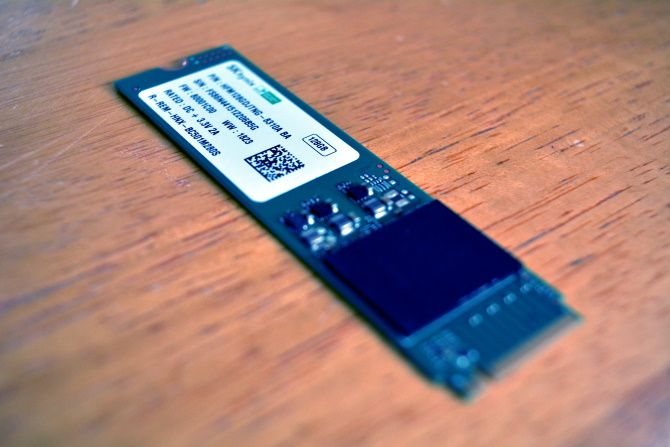
M.2, formerly known as the Next Generation Form Factor (NGFF), offers faster data throughput than standard mSATA. As the latter relies on PCIe, it is limited to 6Gb per second (Gb/s). Older laptops and Windows tablets use mSATA SSD drives.
Three types of M.2 are available:
- SATA: This option uses the AHCI driver and routes to a SATA 3.0 port via the M.2 connector. It is slow, but widely compatible.
- AHCI: Advanced Host Controller Interface is a slower option that is found on low budget motherboards and is suited to older operating systems. SSDs connected via AHCI typically behave more like DRAM than a standard HDD.
- NVMe: Non-Volatile Memory Express or NVM Express was created specifically for next-generation SSDs. While NVMe storage is available with standard PCIe connections for desktop motherboards, the M.2 form factor uses a different connector.
While mSATA SSDs are good, take the opportunity to use M.2 if your motherboard supports it.
What Does an M.2 SSD Look Like?
As well as the two types of M.2, you’ll find some differences in the connectors. It is vital that you buy the right type of M.2 SSD for the connection on your motherboard. Three configurations are available, which differ based on the position of the notch, the gap in the edge connector.
- B: The notch is six pins from the left.
- M: The notch is five pins from the right.
- B&M: Features two notches; first is six pins from the left, the second is five pins from the right.
Obviously, you will need to take care to check your motherboard documentation before purchasing an M.2 SSD. A mistake could be expensive!
How to Install an M.2 SSD Drive
Before you install your M.2 SSD drive, take the necessary anti-static precautions. Be sure also to disconnect the computer from the mains. If you’re installing an M.2 SSD device in a laptop, remove the battery.
Step 1: Select the M.2 SSD You Want
Start off by identifying an M.2 SSD storage device based on the requirements of your motherboard and your port key. This is undoubtedly the most difficult aspect of the process. A site like PCPartPicker.com can help you make the right choice, based on your motherboard, size requirement, and budget.
Step 2: Identify the M.2 Connector
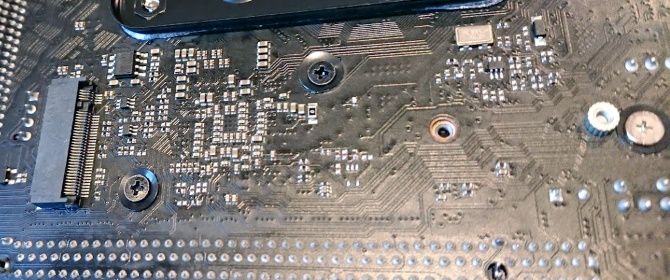
Some motherboards have multiple M.2 ports. One might be for a network card or some other device. Alternatively, your motherboard might have a specific configuration for optimum use. You might have four or more SATA drives, for example, requiring the use of a specific M.2 port.
It is important, therefore, to check your motherboard documentation to confirm which port the M.2 SSD should be connected to.
Step 3: No M.2 Connector? Try an Adapter!
Is your motherboard missing an M.2 slot? If so, you can purchase PCIe adapter cards that add the M.2 slot. These are relatively inexpensive, so won’t bump up your total too much if you’re thinking of buying an M.2 SSD.
Mailiya M.2 PCIe to PCIe 3.0 x4 Adapter – Support M.2 PCIe 2280, 2260, 2242, 2230
Mailiya M.2 PCIe to PCIe 3.0 x4 Adapter – Support M.2 PCIe 2280, 2260, 2242, 2230
Buy Now On Amazon $15.99
No PCIe adapters are available for laptops, but USB 3.0 enclosures are available. This isn’t ideal, and is useless for operating systems. For ultra-fast storage—perhaps for high-definition video editing—it’s a smart option.
QNINE M.2 SSD Enclosure B Key, Ideal for WD Blue, Crucial MX500, Kingston A400, Samsung 860 EVO M.2 SATA SSD
QNINE M.2 SSD Enclosure B Key, Ideal for WD Blue, Crucial MX500, Kingston A400, Samsung 860 EVO M.2 SATA SSD
Buy Now On Amazon $19.59
Remember when buying an adapter to ensure the key matches the M.2 SSD you’re buying. Otherwise, it will be incompatible!
Step 4: Install the M.2 SSD Drive
When you’re ready to install the M.2 SSD drive, begin by removing the securing screw from the port. Use a Philips head screwdriver for this and keep the screw safe. Sticking it on a blob of adhesive putty is a good option.
Next, ensure the SSD drive and connector match up, then slide it into the port at a 30-degree angle. In some cases, it should slide in without too much effort, but you may need to wiggle it a little. Once in, it should stay at the 30-degree angle; there is a slight spring, which you’ll see if you push the other end down toward the motherboard.
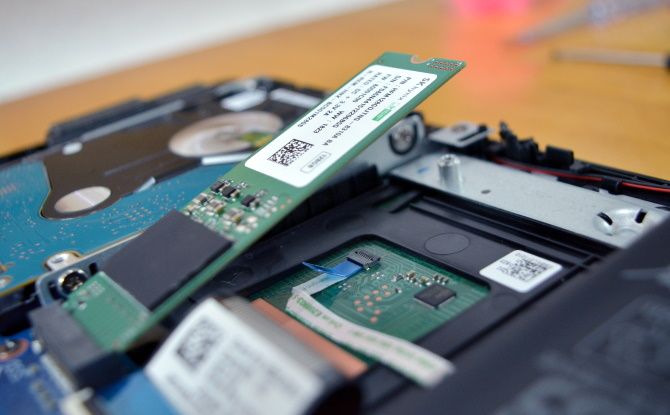
To secure the M.2 SSD drive, push it against the motherboard, line up the screw, and tighten it up. Note that the position of the screw will depend on the length of the M.2 SSD. Several holes should be available to support difference SSD sizes.
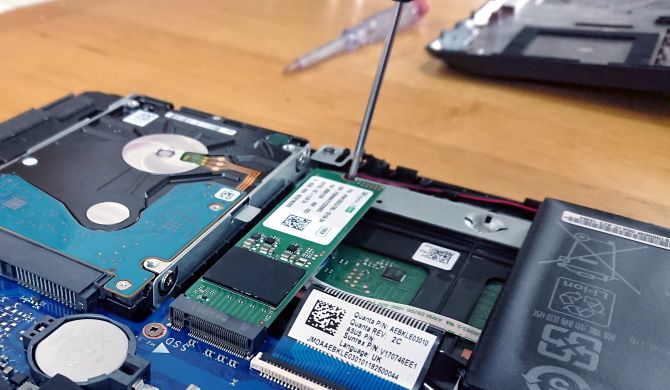
Take care not to over-tighten the SSD as this will damage it. Replace your PC’s case before you boot it up again.
Step 5: Enable M.2 in the BIOS/UEFI
You’ll need to enable the M.2 device in your PC’s settings, so boot straight into the BIOS/UEFI screen (how to check if your PC uses BIOS or UEFI). Look for an M.2 option related to the PCI Express slot. Check the motherboard manual for the correct steps here, as it will differ from manufacturer to manufacturer.
With the device enabled, you can opt to install Windows or whatever operating system you prefer. M.2 SSD devices are particularly suited to running operating systems rather than acting as storage for other files.
The Downsides of Using an M.2 SSD
While an M.2 SSD can give your PC a super-fast operating system, you should be aware of potential drawbacks.
For example, older motherboards with M.2 SSD support may rely on the PCIe bus, which means devices are limited to 6Gb/s transfer speeds. Furthermore, M.2 SSD drives connected to the PCIe bus cannot be used as the system’s primary drive.
Newer motherboards don’t have this issue, so it’s worth checking that your hardware will deliver the speeds you’re expecting.
Meanwhile, limits to the motherboard design may restrict how the M.2 device interacts with the rest of the system. PCIe bandwidth is limited, which means that adding an M.2 SSD could interfere with other hardware. Again, check the motherboard documentation to check how an M.2 drive could impact your setup.
Get Fast SSD Storage on Your PC With M.2
Following the above steps will enable you to install an M.2 SSD into your PC or upgrade the existing M.2 device in your laptop. Either way, with faster storage now installed, your operating system will boot quicker and performance will improve.
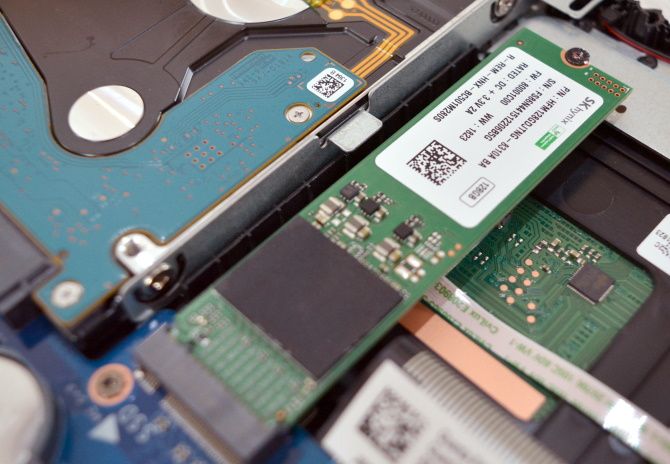
Simply select the right M.2 SSD and connector for your motherboard. Consider an adapter if what you want is beyond your budget; insert the device carefully.
No option for M.2 on your motherboard? A standard SSD drive will still improve speed over traditional HDDs, as will adding additional RAM to the system. If you’re new to SSD drives, here’s how to make an SSD last longer
How to Enable TRIM & Prolong the Life of Your SSDs
How to Enable TRIM & Prolong the Life of Your SSDs
If you want to maximize the lifespan of your SSDs, then you should make sure to enable TRIM support as soon as possible.
Read More
.
